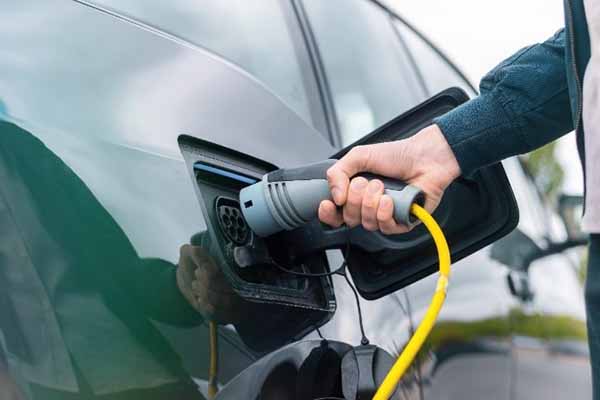The global electric vehicles market size is expected to surpass USD 822.5 billion by 2030, expanding at a rate of 17.5% CAGR during the forecast period, 2022–2030. This growth is attributed to the increasing use of electric vehicles due to significant cost saving on running and low maintenance of vehicles.
Electric vehicles are the vehicles that use one or more electric motor instead of an internal combustion engine. Nowadays, electric vehicle is a trending topic across the globe, as it has gained popularity across the globe for being the best alternative for conventional combustion vehicles. Electric vehicle (EV) offers various advantages over the conventional ones such as low carbon emission, smoother drive, and higher economy which make it widely popular.
There are several types of electric vehicles such as two-wheelers (e-bikes), commercial vehicles, and passenger vehicles. E-bikes and electric cars are gaining popularity for compact size and better performance, efficiency, and convenience.
Electric vehicles use a large traction of battery pack to power electric motor for propulsion and all the electric vehicles produce zero tailpipe emission which make them eco-friendly.
Types of EVs based on propulsion system:
- Battery Electric Vehicle (BEV) – Powered solely by an electric battery, with no gas engine parts.
- Hybrid Electric Vehicle (HEV) – Low-emission vehicles that use an electric motor to assist gas-powered engines.
- Plug-in Electric Vehicle (PEV) – Similar to hybrid, but have a larger battery and being able to plug into the grid to recharge
- Extended Range Electric Vehicle (EREV) – It has an auxiliary power unit, called a range extender which increases the EREV’s driving range.
- Plug in Hybrid Electric Vehicle (PHEV) – These vehicles combine a rechargeable high-capacity battery with an internal combustion engine.
Consumers across the globe are preferring Plug in Hybrid Electric Vehicle (PHEV) as PHEVs generally have larger battery packs than hybrid electric vehicles so consumers can drive moderate distance just by using these electric batteries.
Get a Free Sample Report @ https://bit.ly/3SWQ496
Types of batteries used in Electric Vehicles:
- Lithium-Ion Batteries: Most of the electric vehicles and PHEVs use lithium-ion batteries. These batteries have good high-temperature performance, high energy efficiency, and low self-discharge
- Lead-Acid Batteries: These batteries are widely used in commercially available electric-drive vehicles for ancillary loads. Lead-acid batteries are designed to be safe, higher in power, and reliable.
- Nickel-Metal Hydride Batteries: Nickel-Metal Hydride batteries have a longer life cycle than the lead- acid batteries. These batteries are widely used in HEVs. Main challenges for these batteries are the higher cost, heating at extreme temperature, and strong self-rate.
How long do EV batteries last?
EV batteries have a life expectancy around 15 to 20 years. Depending on the model, the average distance on one charge for an EV is between 300 to 500km. One full-electric BEV has an average range of 250 miles on a single charge. However, newer models from companies like Tesla and Mercedes can go as far as 600 miles in one charge. New technological advancement in EVs such as fast EV charging and increasing charging infrastructure in developing countries can drive EV industry growth.
To Know More @ https://growthmarketreports.com/report/electric-vehicle-market-global-industry-analysis
Benefits of Electric vehicles:
- Electric vehicles use electricity to charge their batteries instead of using fossil fuels like petrol or diesel.
- The running cost of electric vehicles is lower compared to the conventional one and Evs are more efficient.
- Electric vehicles have low maintenance cost as they do not have many moving parts as the combustion engine.
- Electric vehicles offer convenient charging for their electric vehicles as customers can easily install electric vehicle charging station at their home.
- Electric vehicles are eco-friendly as they are use electric motors and do not emit pollutants and helps to reduce the CO2 emission for better environment.
- Moreover, electric vehicles reduce noise pollution as they do not use combustion engine. Electric vehicle can help to reduce carbon footprint because there will be zero tailpipe emission from all electric vehicles.
Future of Electric Vehicle:
Electric industry is gaining rapid popularity across the globe because of increasing use of all types of electric vehicles. Major vehicle manufacturing companies are focusing on launching at least one EV model to reduce the fuel emission. Increasing government initiatives to increase the number of Evs across the globe can produce lucrative opportunities for better future of electric vehicles.
Electric vehicles can be widely adopted across the globe owing to the strict government policies regarding electric vehicles, for instance Indian government announced to convert all government vehicles to be converted to electric vehicles by 2030.
Additionally, government also aims to phase out all fossil fuel based commercial fleets and logistics vehicles in all cities by 2030. Governments of emerging economies such China and India are focusing on increasing charging infrastructure which can boost the growth of EV industry.















